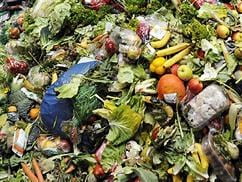Reducing Postharvest Losses in Developing Countries
Cost-effective technologies to reduce postharvest losses in developing countries
Funding for this project (# 2016-07259) was provided by the United States Department of Agriculture (USDA) National Institute of Food and Agriculture (NIFA) Higher Education Challenge (HEC) grant program. This project is in collaboration with the University of Arkansas, Texas Tech University, and The Borlaug Institute at Texas A&M University.

Overview
Postharvest losses in developing countries range from 30% to 80%. These losses can occur at harvesting, during packing, transportation, in wholesale and retail markets, and during delays at different stages of handling. Poor temperature management, use of poor quality packages, poor field sanitation and time to reach markets are the major factors responsible for physical and quality losses. Postharvest loss results in significant loss of money and other resources in food production and can lead to food insecurity in many parts of the developing world. In this lesson, you will learn the environmental, social and economic consequences of postharvest loss and how cost-effective postharvest technologies can be utilized to reduce food and value losses.
Objectives
- Identify the scope of postharvest losses in developing countries
- Identify the environmental, social and financial ramifications of postharvest losses
- Identify and describe cost-effective postharvest technologies to reduce postharvest loss
Level of Instruction
Graduate
Learner Prerequisite Knowledge
Basic postharvest handling/storage, processing methods
Instructor Preparation/Notes
Read all associated reading materials, have existing knowledge of the subject matter
Instructions
Learner time required: this lesson should take a well-informed student one to two hours to complete.
Read through the materials and watch the videos. At the end, there is a self-exam that you can use to assess if you have met the objectives.
Learning Materials
Read:
- Coolbot provides inexpensive, effective cooling
- Solar drying adds value to crop surplus
- Identification of appropriate postharvest technologies for small scale horticultural farmers and marketers in Sub-Suharan Africa and South Asia – Part 1. Postharvest Losses and Quality Assessments.
- Global food losses and food waste: extent, causes and prevention
Watch:
- Building the chimney solar dryer
- Postharvest Technologies for Developing Countries PowerPoint presentation
Assessment – take the self-assessment exam
Additional Materials and Resources
Creative Commons Attribution:
Attribution-NonCommercial–ShareAlike 3.0 Unported (CC BY-NC-SA 3.0)
Luke Howard
Ph.D.
Professor, Department of Food Science
University of Arkansas
